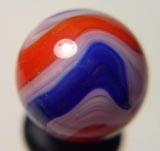While the process of photography has been around for hundreds of years, photography did not become widespread until around 1855 with the development of photographic emulsions on glass plates. Daguerreotype cameras formed images on silvered copper plates. The earliest daguerreotype cameras required several minutes to half an hour to expose images on the plates. By 1840, exposure times were reduced to just a few seconds owing to improvements in the chemical preparation and development processes, and to advances in lens design. American daguerreotypists introduced manufactured plates in mass production, and plate sizes became internationally standardized: whole plate (6.5 x 8.5 inches), three-quarter plate (5.5 x 7 1/8 inches), half plate (4.5 x 5.5 inches), quarter plate (3.25 x 4.25 inches), sixth plate (2.75 x 3.25 inches), and ninth plate (2 x 2.5 inches). Plates were often cut to fit cases and jewelry with circular and oval shapes. Larger plates were produced, with sizes such as 9 x 13 inches (“double-whole” plate), or 13.5 x 16.5 inches (Southworth & Hawes’ plate).
Film cameras intended for use by the general public were not available until around 1890 with the development of box cameras and portable bellows cameras that used plastic film on rolls. The use of photographic film was pioneered by George Eastman, who started manufacturing paper film in 1885 before switching to celluloid in 1889. His first camera, which he called the "Kodak," was first offered for sale in 1888. It was a very simple box camera with a fixed-focus lens and single shutter speed, which along with its relatively low price appealed to the average consumer. The Kodak came pre-loaded with enough film for 100 exposures and needed to be sent back to the factory for processing and reloading when the roll was finished. By the end of the 19th century Eastman had expanded his lineup to several models including both box and folding cameras.
On this page we feature collectible and vintage cameras and parts by by Agfa, Argus, Kodak, Leica, Retina, Voigtländer, and others.
Sponsored Link: Cameras on Amazon










 Buy Akro Agate Popeye marbles on eBay!
Buy Akro Agate Popeye marbles on eBay!